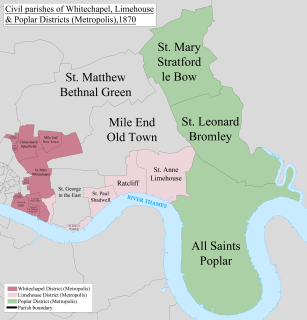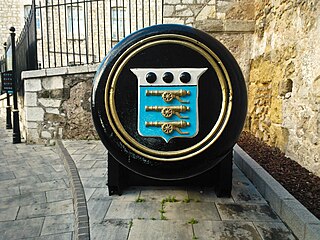 W
WThe history of the British Army spans over three and a half centuries since its founding in 1660 and involves numerous European wars, colonial wars and world wars. From the late 17th century until the mid-20th century, the United Kingdom was the greatest economic and imperial power in the world, and although this dominance was principally achieved through the strength of the Royal Navy (RN), the British Army played a significant role.
 W
WTommy Atkins is slang for a common soldier in the British Army. It was certainly well established during the nineteenth century, but is particularly associated with the First World War. It can be used as a term of reference, or as a form of address. German soldiers would call out to "Tommy" across no man's land if they wished to speak to a British soldier. French and Commonwealth troops would also call British soldiers "Tommies". In more recent times, the term Tommy Atkins has been used less frequently, although the name "Tom" is occasionally still heard; private soldiers in the British Army's Parachute Regiment are still referred to as "Toms".
 W
WFrom the late 1700s until the end of the 19th Century, the British Empire established, expanded and maintained a number of colonies on the continent of Australia. These colonies included New South Wales, Van Diemen's Land, Western Australia, South Australia, Victoria and Queensland. Many of these were initially formed as penal settlements and all were built on land occupied by Indigenous Australians. In order to keep the large number of transported convicts under control, enforce colonial law and to secure the expansion of the colonies from Aboriginal resistance, British armed forces, including the British Army, were deployed and garrisoned in Australia. From 1790 to 1870 over 30 different regiments of the British Army consisting of a combined total of around 20,000 soldiers were based in the Australian British colonies.
 W
WThe Bermuda Garrison was the military establishment maintained on the British Overseas Territory of Bermuda by the regular British Army, and its local militia and voluntary reserves from 1701 to 1957. The garrison evolved from an independent company, to a company of Royal Garrison Battalion during the American War of Independence, and a steadily growing and diversifying force of artillery and infantry with various supporting corps from the French Revolution onwards. During the American War of Independence, the garrison in Bermuda fell under the military Commander-in-Chief of North America. Subsequently, it was part of the Nova Scotia Command until 1868, and was an independent Bermuda Command from then 'til its closure in 1957.
 W
WColchester Garrison is a major garrison located in Colchester in the county of Essex, Eastern England. It has been an important military base since the Roman era. The first permanent military garrison in Colchester was established by Legio XX Valeria Victrix in AD 43 following the Roman conquest of Britain. Colchester was an important garrison town during the Napoleonic Wars and throughout the Victorian era. During the First World War several battalions of Kitchener's Army were trained there. Now, 2nd Battalion and 3rd Battalion of The Parachute Regiment are based there. Today there are new barracks, which, in replacing the Victorian buildings, have made available building land slightly nearer the town centre.
 W
WThe Donnington Historic Weapons Collection is a collection of weapons accumulated by MoD Donnington in Shropshire, England, over a long period of time, housed at the Combined Military Services Museum in Maldon, Essex, England.
 W
WThe Norfolk Militia was formed under the Militia Act of 1757, replacing earlier less formal arrangements. From this date, better records were kept, and the men were selected by ballot to serve for longer periods. Proper uniforms and better weapons were provided, and the force was 'embodied' from time to time for training sessions.
 W
WThe Old Artillery Ground is an area of land in Spitalfields, London formerly designated one of the Liberties of the Tower of London and Crown Land.
 W
WProspect Camp, also referred to as Prospect Garrison, was the main infantry camp of the Bermuda Garrison. It also contained Fort Prospect, Fort Langton, and Fort Hamilton, as well as being the base for mobile artillery batteries, manned by the Royal Artillery. Outlying parts of the camp were disposed of in the early decades of the Twentieth Century as the garrison in Bermuda was reduced. The core area, including the barracks, passed to the local government when the garrison was withdrawn in 1957.
 W
WThe British Army came into being with the unification of the Kingdoms of England and Scotland into the Kingdom of Great Britain in 1707. The new British Army incorporated Regiments that had already existed in England and Scotland. The Army has traditionally relied on volunteer recruits, the only exceptions to this being during the latter part of the First World War until 1919, and then again during the Second World War when conscription was brought in during the war and stayed until 1960.
 W
WThe Secretary at War was a political position in the English and later British government, with some responsibility over the administration and organization of the Army, but not over military policy. The Secretary at War ran the War Office. After 1794 it was occasionally a Cabinet-level position, although it was considered of subordinate rank to the Secretaries of State. The position was combined with that of Secretary of State for War in 1854 and abolished in 1863.
 W
WThe position of Secretary of State for War, commonly called War Secretary, was a British cabinet-level position which existed from 1794 to 1801 and from 1854 to 1964. The Secretary of State for War headed the War Office and was assisted by a Parliamentary Under-Secretary of State for War, a Parliamentary Private Secretary who was also a Member of Parliament, and a Military Secretary, who was a general.
 W
WThe Self-denying Ordinance was passed by the English Parliament on 3 April 1645. All members of the House of Commons or Lords who were also officers in the Parliamentary army or navy were required to resign one or the other, within 40 days from 3 April 1645.
 W
WThe Service Prosecuting Authority (SPA) is the organisation within the Ministry of Defence, responsible for consideration of cases referred to it by the Service Police and where appropriate the Military Chain of command and where necessary the directing and prosecuting of those cases at Courts Martial worldwide and in the Service Civilian Court. Furthermore, it acts as respondent in the Summary Appeal Court and represents the Crown in the Courts Martial Appeal Court (CMAC).
 W
WSoest-Bad Sassendorf Airfield, located in the Sauerland region close to Soest and the Möhnesee, between the A 44 and B 1, is now a civilian airfield. It is rated/approved as a "special landing site". These are often used by aero clubs. Unlike a commercial airfield, only the operators and may take off and land. There is no obligation to operate, and therefore opening times are not required.
 W
WSt. David's Battery, also known during wartime as the "Examination Battery", was a fixed battery of rifled breech-loader (RBL) artillery guns, built and manned by the Royal Garrison Artillery and the Royal Engineers, and their part-time reserves, the Bermuda Militia Artillery and the Bermuda Volunteer Engineers, part of the Bermuda Garrison of the British Army.
 W
WThe Surveyor-General of the Ordnance was a subordinate of the Master-General of the Ordnance and a member of the Board of Ordnance, a British government body, from its constitution in 1597. Appointments to the post were made by the crown under Letters Patent. His duties were to examine the ordnance received to see that it was of good quality. He also came to be responsible for the mapping of fortifications and eventually of all Great Britain, through the Ordnance Survey, and it is this role that is generally associated with surveyor-generalship.
 W
WThis timeline covers the main wars, battles and engagements and related issues for the Scottish, English and British Army, from 1537 to the present. See also Timeline of British diplomatic history.
 W
WThe War Office was a Department of the British Government responsible for the administration of the British Army between 1857 and 1964, when its functions were transferred to the Ministry of Defence. It was equivalent to the Admiralty, responsible for the Royal Navy, and the Air Ministry, which oversaw the Royal Air Force. The name "War Office" is also given to the former home of the department, located at the junction of Horse Guards Avenue and Whitehall in central London. The landmark building was sold on 1 March 2016 by HM Government for more than £350 million, on a 250-year lease for conversion into a luxury hotel and residential apartments.
 W
W'Warwick Camp' was originally the rifle ranges and a training area used by units of the Bermuda Garrison based elsewhere in the colony. Today, the Camp is the home of the Royal Bermuda Regiment.